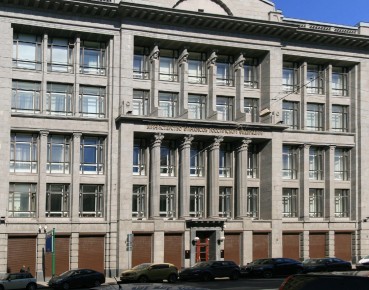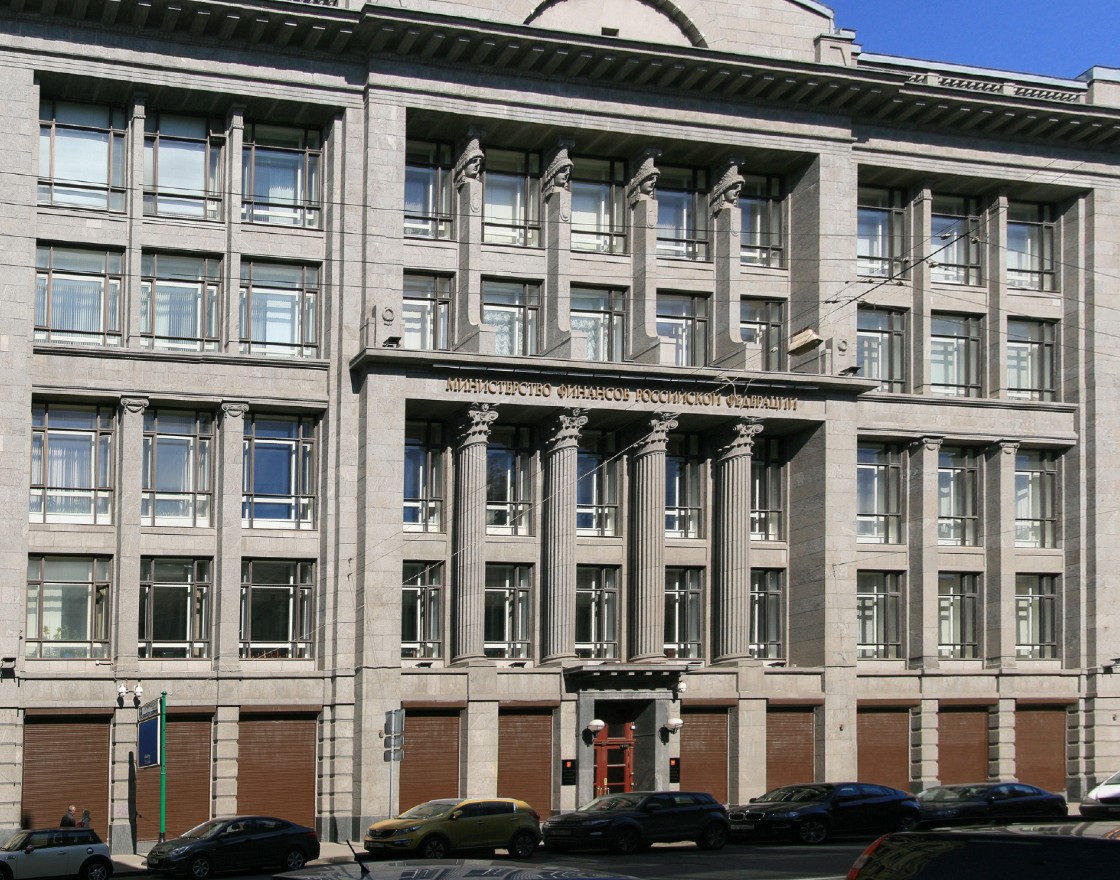Tydzień w gospodarce
Category: Raporty

Ministry of Finance, Moscow, Russia (Ludvig14, CC BY-SA 3.0)
In early March 2020, Russia’s Finance Ministry boosted with optimism. Despite the turmoil on the global oil markets, caused by the inability of Russia and Saudi Arabia to reach an agreement on future oil production cuts, and the subsequent fall in oil prices, there was a surprising coolness emanating from Moscow. The sudden drop in oil prices from the USD60/barrel in January to the USD45/barrel in March was certainly deemed regrettable by Moscow, but it was far from representing an existential threat to the Russian economy. At the time, Russia’s Finance Minister Anton Siluanov said (read more) that there was enough money in the National Welfare Fund to cover a shortfall of oil prices for up to 10 years.
Needless to say, a lot has changed since then, and not for the better. In mid-April, the price for a barrel of West Texas Intermediate (WTI) oil slumped shortly into negative territory for the first time in history. The situation in Russia has been slightly less dramatic as Russian oil companies sell a different kind of oil — Ural blend, whose price is tied to the benchmark Brent crude oil.
Nevertheless, even the prices of Russian oil took a deep dive. Although the prices of this particular type of oil are much harder to determine at any given time, the Russian financial daily Vedomosti reported on April 21st that Ural was being delivered to the Mediterranean for a price of USD8.48 a barrel, the lowest price since 1998.
The price of Urals has since then bounced back to around USD28/barrel and is currently selling for around USD20/barrel. But even those prices are way too low for the Russian economy to be sustainable long term. The recent development on international oil markets forced Russia’s Finance Minister Siluanov to publicly recalculate the durability of Russia’s financial reserves. In late April, Siluanov said on the Russian TV that there will be RUB7 trillion left in the National Welfare Fund at the end of this year. In the beginning of April, there was RUB12.8 trillion in the fund, according to Profile.ru. This means that in 2020 only Moscow will syphon RUB5.8 trillion out of the fund.
In another words, with the current Urals price, resources in the National Welfare Fund, which were initially supposed to cover for the missing oil revenues for 10 years, will be depleted already during the course of 2021.
Moreover, according to Russia’s budget rule, reserves from the fund can only be used for compensation of the missing oil revenue in the budget caused by prices of Russian Urals Brand going below USD42.4/barrel. The reserves can’t be used for other purposes. This means that money from the fund only fills the hole in the existing budget (missing oil revenues), which wasn’t created with the crisis in mind. All the current extra spending to curtail the impact of the pandemic needs to be financed by other means. Meanwhile, the amount of individuals and businesses in Russia who are in need of that support from the government grows by day.
One of the main components of the Russian budget’s expense side is the payout of unemployment benefits. In 2019, Russia had a record low unemployment number of 4.55 percent, according to data provided by Statista. However, in light of the current situation, Russia will likely experience a steep increase in the amount of people filling for unemployment benefits. As professor Konstantin Ordov from the Russian Economic University wrote for Profile, anywhere between 7 and 10 million Russians can expect to lose their jobs over the next few months. This could put a severe strain on the already stretched Russian budget.
So far, the Russian government has only spent about RUB2 trillion on propping up the country’s ailing businesses. Most of that money came in the form of tax holidays and loan guarantees rather than direct payments. According to various estimates, the Russian economy could decrease by anywhere between 5 and 8 per cent in 2020. In the 2008-09 crisis the economy decreased by 7.5 per cent.
Since reserves in the National Welfare Fund can only be used to cover for the missing oil revenues in the state budget, Moscow needs to look for other sources to finance the current extra-budgetary spending on corona-induced economic crisis firefighting. The first in line to ask for money are local Russian banks and investors.
On April 22nd, Russia’s Finance Ministry sold at an auction five-year Federal Loan Obligations (OFZ) for RUB86.7bn on the domestic market. As the final amount wasn’t announced in advance, the demand increased the supply nearly twofold, sending an encouraging sign to Moscow. This could be a way to quickly obtain more cash.
And indeed, a next round came already a week later. This time OFZs with differing levels of maturity were sold for RUB134bn, the largest issuance since May 2019. There are plans to sell OFZs worth RUB2.324 trillion to Russian banks and other investors this year, according to Financial Bond Information.
Another option for Moscow is to borrow money abroad. After all, Russia still has a very low debt to GDP ratio. According to IMF, Russia’s level of indebtedness, standing at 13.79 per cent, is the fifth lowest of all countries in the world.
Although, for many different reasons, the Russian government has an aversion to borrow money on international markets, it is still an option Moscow could resort to when all alternatives are exhausted.
For example, if Russia was willing to increase its debt to GDP ratio to 50 per cent it would suddenly have access to approximately RUB40 trillions, which would be more than enough to survive even under the more pessimist scenarios. All the while it’s debt-to-GDP ratio would still be lower than that of the fiscally responsible Germany (57 per cent). The last option is a massive devaluation of the RUB.
It is important to keep in mind that the money in the National Welfare Fund is held in a number of different currencies. According to Profile, the RUB12.8 trillion in the fund is distributed in the following way: USD57.2bn, EUR49.4bn, GBP9.6bn and RUB1.49 trillion. Keeping financial reserves in different currencies allows the Finance Ministry to increase the RUB value of the fund according to its needs.
If the value of the Russian Ruble dropped to RUB120/USD1 the RUB value of the National Welfare Fund would suddenly increase almost twofold. That said, the RUB devaluation would have to be conducted in a way that would not create too strong inflationary pressures on the Russian economy, a rather tight balancing act.
In any case, Moscow still has at its disposal a number of financing options when all reserves from the “rainy day fund” are depleted.
Filip Brokeš is an analyst and a journalist specializing in international relations.



